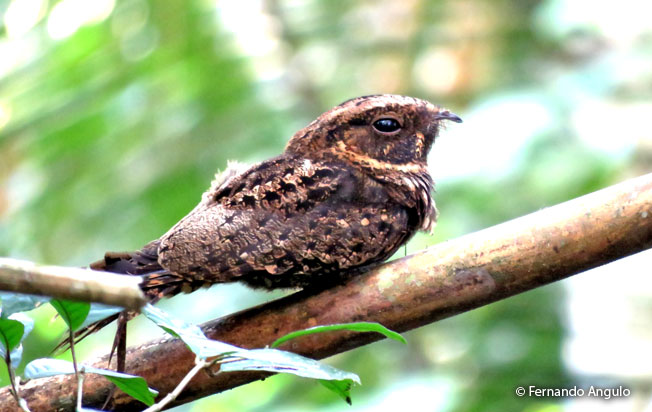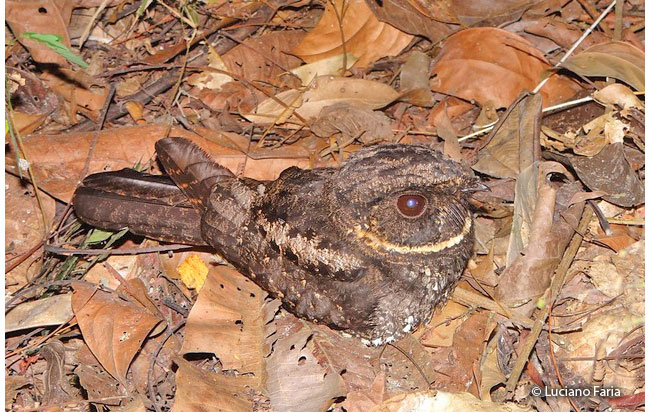Order: Apodiformes | Family: Caprimulgidae | IUCN Status: Least Concern

Age: Adult | Sex: Unknown | Loc. Amazonian, Brazil

Age: Adult | Sex: Unknown | Loc. Amazonian, Brazil

Age: Adult | Sex: Unknown | Loc. Southeast Peru

Age: Adult | Sex: Unknown | Loc. Amazonian, Brazil
Status: The Silky-tailed Nightjar is rare and local near the foothills of the Andes up to 1900 m. It seems associated with openings or tree fall gaps in the Amazonian forest interior. It also occurs in Br and Bo.
Name in Spanish: Chotacabras Cola de Seda.
Sub-species: Silky-tailed Nightjar (Antrostomus sericocaudatus mengeli), (Dickermann), 1975.
Meaning of Name: Antrostomus: Gr. Antron= cavern and stoma, stomatos= mouth. sericocaudatus: L. sērikos, sērikon= silk and cauda, caudatus= tail, tailed.
 Voice
VoiceReferences:
-
- Species range based on: Schulenberg, T. S., D. F. Stotz, and L. Rico. 2006. Distribution maps of the birds of Peru, version 1.0. Environment, Culture & Conservation (ECCo). The Field Museum. http://fm2.fieldmuseum.org/uw_test/birdsofperu on 08/01/2015.